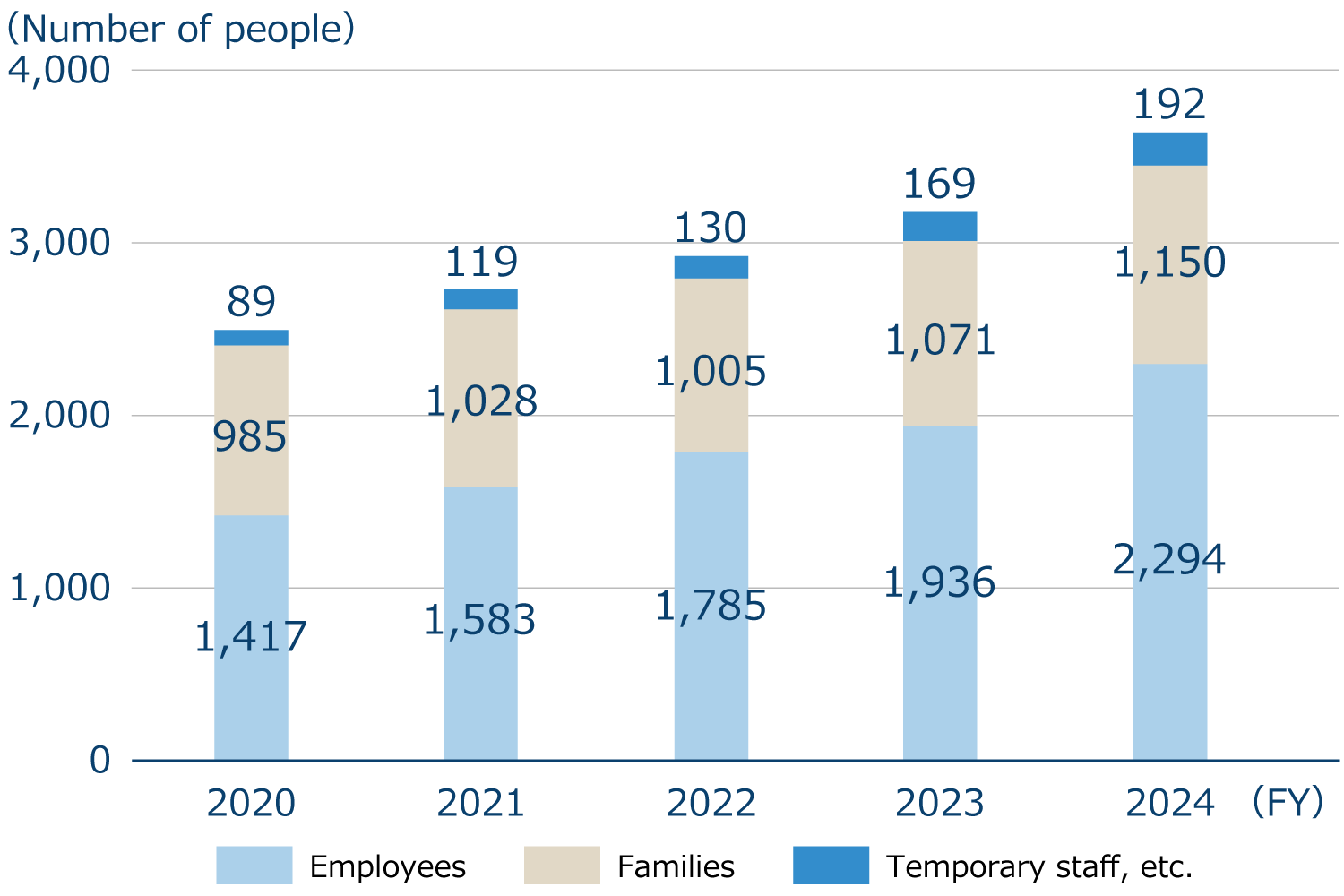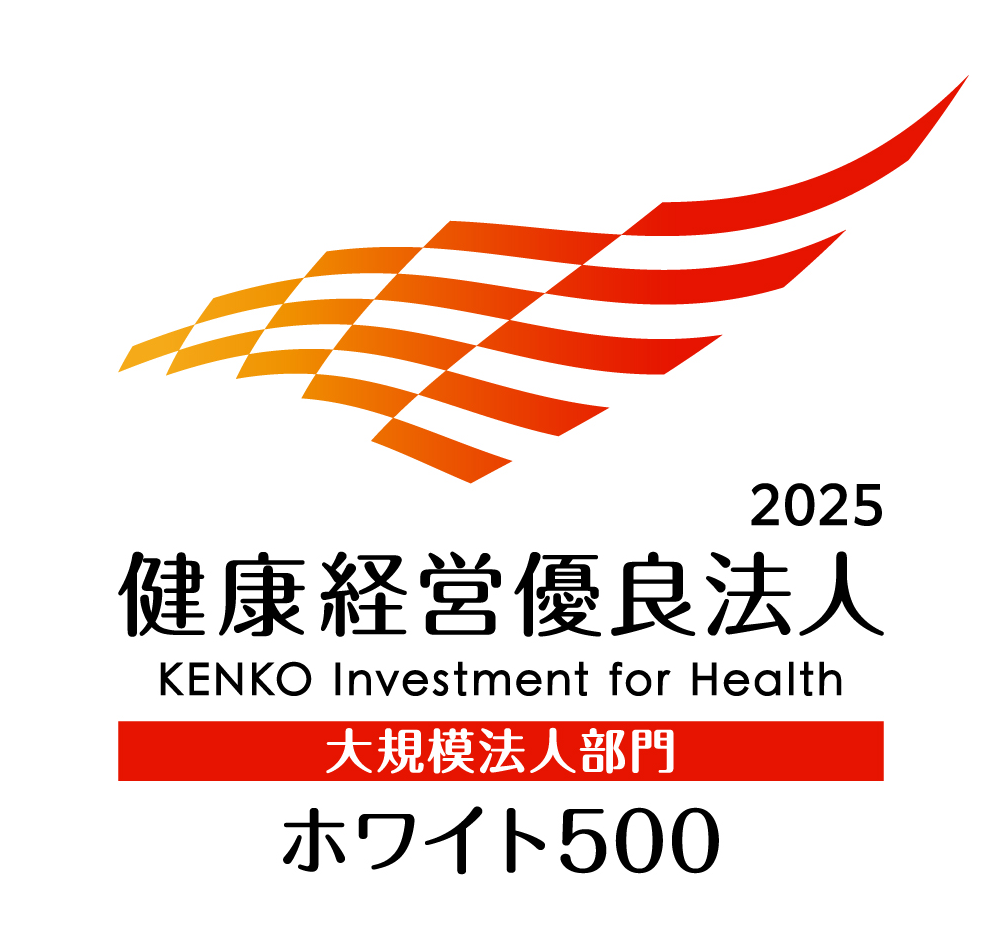As a company that contributes to people's health, it is important for us to provide our employees with an environment where they can work with peace of mind, which is why we also actively engage in health management. In order to contribute to society through the creation of innovative pharmaceutical products, it is vital that all employees and their families stay healthy (both physically and mentally), that employees’ workplaces enable them to demonstrate their abilities to their fullest extent, and that the lives of employees and their families are fulfilling. As a highly unique indicator, we have established the difference between the health age of our employees and their actual age. In FY2022, the difference was -1.8 years, but we have set a goal of making it -3.0 years by FY2026. In addition, in an aim to improve the health literacy of our employees, we are working to promote KENKO Investment for Health management through various activities.
In recognition of such activities, Ono Pharmaceutical has been recognized for seven consecutive years as a “Outstanding Organization of KENKO Investment for Health 2025-White 500”, We will continue our efforts to expand human capital by promoting KENKO Investment for Health management.
Based on our corporate philosophy, Dedicated to the Fight against Disease and Pain, we desire to contribute to society through the creation of innovative drugs. In order to continue to make bold efforts toward the realization of our corporate philosophy, it is important to ensure that all employees are both mentally and physically healthy, that their workplaces allow them to fully demonstrate their abilities, and that the daily lives of employees and their families are fulfilling. We declare that employees, companies, labor unions, occupational health staff, and health insurance society will actively engage as a single team in maintaining and improving the health of employees and their families.
April 2018
Gyo Sagara
Representative Director, Chairman of the Board & CEO
ONO PHARMACEUTICAL Co., Ltd.

| Cancer screening rate in FY2024*1 | Target | |
|---|---|---|
| Stomach cancer screening | 96.2% | 100% |
| Lung cancer screening | 99.5% | 100% |
| Colorectal cancer screening | 93.9% | 100% |
| Breast cancer screening | 89.9% | 100% |
| Cervical cancer screening*2 | 70.0% | 70% |
| Implementation rate of specified health guidance | Treatment continuation rate* | |
|---|---|---|
| FY2024 | 76.6% | 21.4% |
The rate of employees on leave due to illness or injury in FY2024 was 1.6%. We will continue to promote health promotion initiatives in order to enhance employees' health literacy and well-being.
Number of participants in walking campaign

In March 2025, we were accredited for seven consecutive years as an “Outstanding Organizations of KENKO Investment for Health 2025 – White 500 (Large Enterprise Category) ”, which is jointly implemented by the Ministry of Economy, Trade and Industry (METI) and the Nippon Kenko Kaigi*.
This system was established with the aim of “visualize” corporations, including large enterprises and small- and medium-sized enterprise, that excel in health management practices. It aims to create an environment where these organizations can receive recognition from employees, job seekers, business partners, and financial institutions.
We set the difference between an employee’s health age® and actual age as a KPI item as one of our activities to enhance human capital in FY2023, and are working to promote our employees’ awareness on their health. We set the goal of increasing the difference between an employee’s health age and actual age from -1.8 years in FY2022 to -3.0 years in FY2026 and will continue to engage in health management through different types of activities.

For effective and efficient health management, we have clarified the important issues and evaluation indicators (KPI) that we want to solve, and we have visualized the flow of initiatives toward the resolution of important issues as a story.
Strategic map of health management

Social value: Dissemination of health management to suppliers and local communities
Corporate value: An increase in the market capitalization of stocks
Health resource: Human and environmental health resources